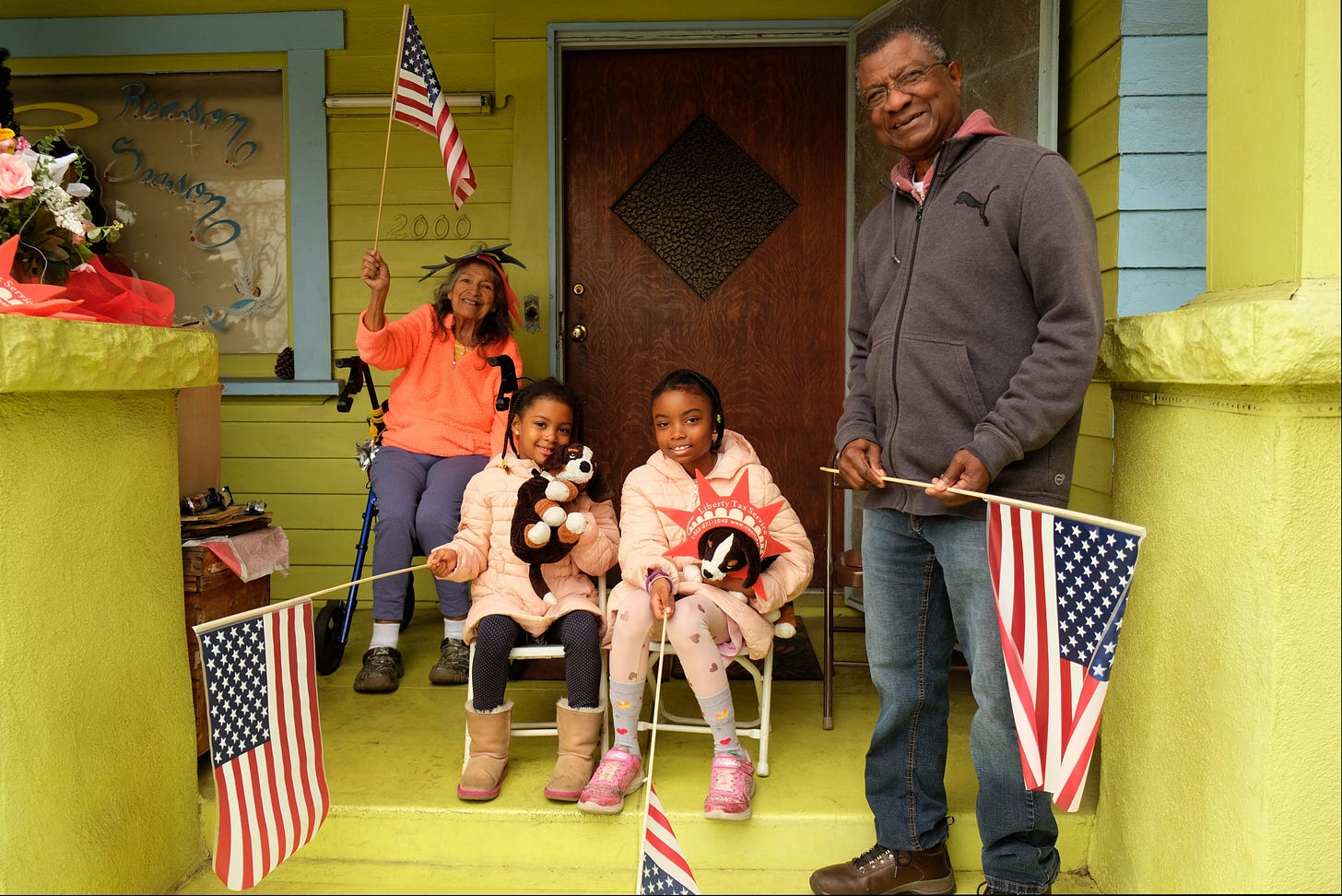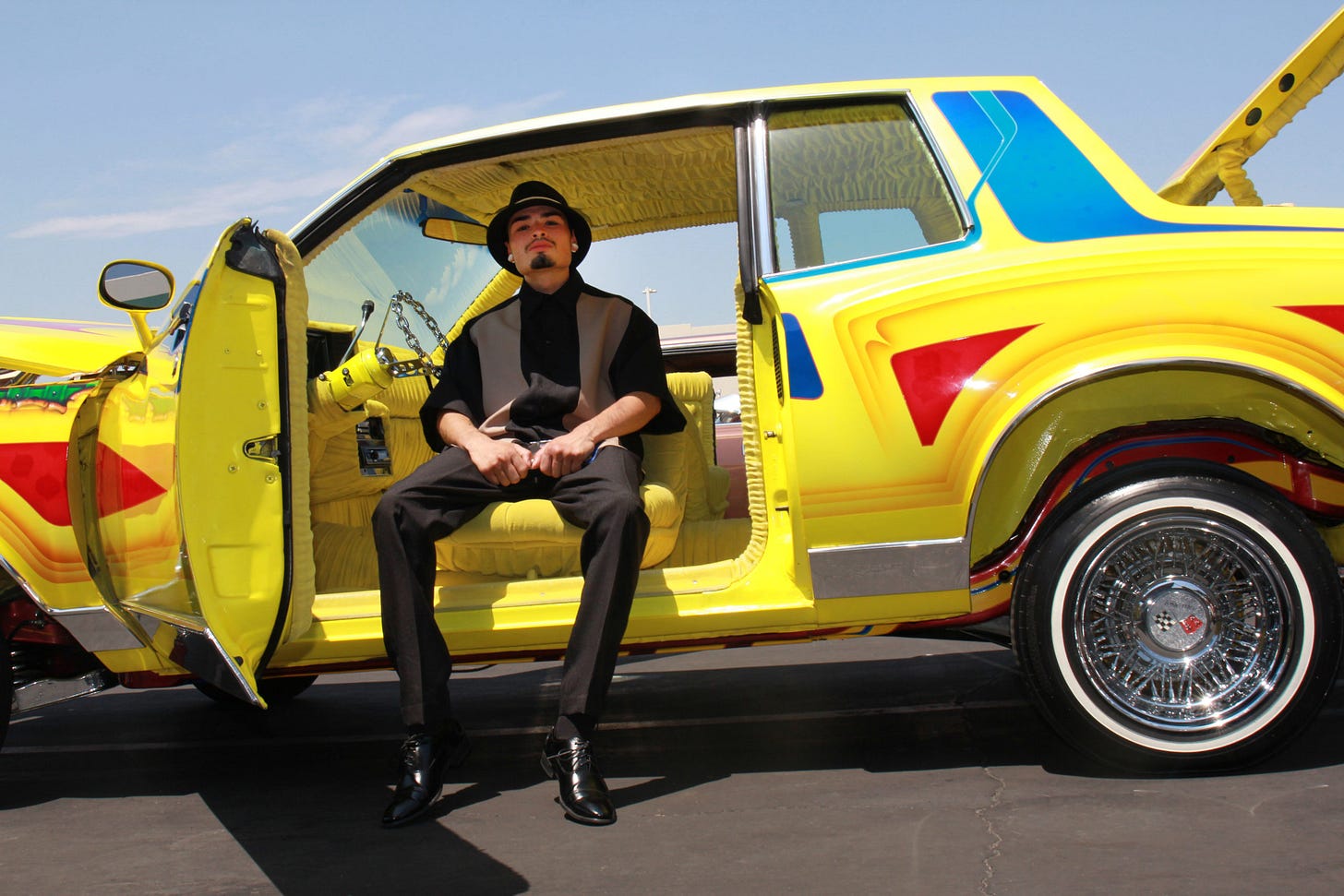A Field Guide to Independence Days
Laleh Khadivi's "Immigrant City" plus facts and readings from Algeria, India, Mexico and Uzbekistan.
Field Guide Vol. 249
Happy Independence Day to those of us based in the US!
While the Fourth of July celebrates events of nearly 250 years ago, the promise of national independence would motivate many of the most powerful movements in the 19th, 20th and now the 21st centuries. This year elections have taken place or will take place in 64 countries, a sign of the accomplishments of such efforts toward self-determination. And this year has seen a continued rise in autocracy and ethno-nationalism, brought about in part, however ironically, by election results. The tensions are self evident.
This Field Guide is devoted to independence days around the world. It includes a lead essay from Laleh Khadivi celebrating some of the best qualities of the US, as well as facts and readings from Algeria, India, Mexico and Uzbekistan.
Many of these facts are taken from our latest guide, produced in partnership with our friends at Coda Story. This guide is devoted to exploring the unexpected ways that colonialism shapes and impacts daily life—through our food, the languages we speak and the ways we navigate our closest relationships.
We hope everyone reading this and enjoying a long weekend can take time to be with friends and family and celebrate the sense of possibility that self-determination offers.
The Castillo Family. Compton, CA. 2020. Photo by Julie Grace Immink.
Immigrant City
By Laleh Khadivi, from Stranger’s Guide: California
You can enter Los Angeles three ways: from the land, from the sea and from the sky. I have taken the land route from the hills of the north or the deserts to the east and come upon the tangle of highways, gardens and billboards. If you count surfing and the one time I took the ferry to Catalina, I have also arrived from the sea, and landed on the combed beaches that lead to boardwalks of folly and commerce and promenades where unhoused men and women stare out at the far horizon and ask for nothing.
I have also entered LA from the sky. Like so many jet-age migrants, I too have hopped off the plane to smell the food, hear the language and music, glimpse the same salvations and sins of the city I just left behind. I have run toward that familiarity and, at times, I have run away from it. Either way, like all who arrive from Tehran, Pueblo, Shenzhen, Zagreb and Nairobi, LA will take you, wrap you up in its strip mall arms and fill your nose with the perfume of salt, motor oil and every earthly spice.
Depending on how you enter and your state of mind, LA is your gateway or your terminus. From somewhere inside this binary of hello and farewell, land and sea, mountain and desert, brews a mesmerizing location intoxication, such that anyone can be from LA, completely at home and completely in exile, all at the same time.
The first time I arrived in LA, it was by land, from the east. We traveled in a maroon upholstered minivan through the deserts, mesas, canyons and flatlands that connected Denton, Texas to Los Angeles, California. I was eight years old, and Los Angeles revealed itself to me as the candy store of human civilization. Mickey Mouse and Alf the alien smiled down on us from billboards. The highways spread over four, five, six lanes and wound past enormous shopping centers and alleys of spindly tall palm trees. There were restaurants everywhere. Cool kids with no parents skated, scooted and surfed. Neon blinked at me night and day. Dotted throughout the vast city, amusement parks beckoned the child inside every adult to let go, relax, have fun, while the child inside every child was given freedom to inhabit their wildest fears and joys.
Most interestingly, there were Iranians everywhere, which was not a thing you could say about our then-hometown, Denton, Texas. It delighted my parents as they found stores full of their favorite ice creams from childhood and cassette tapes of their teen pop music idols, along with sumac powder, books of poetry and doogh, the yogurt drink with salt and bubbles. Woven throughout it all were a million languages, in the mouths of all manner of people, on the signs of grocery stores and tailor shops and banks, the regular, embedded, everyday presence of all kinds of people such that there was, at least to my young sensibilities, no other. At the end of it all—as if that were not enough—was the sea: the warm sea with kind waves and bizarre but harmless whips of kelp I imagined as the hair of some deepwater maiden.
• • •
Custom-made Monte Carlo, “Luscious Illusion,” at a lowrider car show. Santa Fe Springs, CA. 2017. Photo by Julie Grace Immink.
We moved from Denton, Texas to Los Angeles when I was in fourth grade. Our house was in the northern suburbs of Los Angeles—a place called Sherman Oaks. The first day of school, I wandered around the yard, getting used to the outdoor campus with no inside hallways, no brick buildings and no second story. A girl much taller than me asked if I wanted to play tetherball. I said yes, though I had never seen the game. I watched as she wacked, with great strength and precision, a volleyball tethered to a pole that was cemented into a metal basin. I stood frozen and mute, afraid of getting hit by the ball as it wrapped around the pole and slowly unraveled. The girl found me wanting, flipped her blond hair into her hoodie and walked away. Yet, this refusal did not make me feel foreign to the place. The yard was full of all kinds of kids, girls and boys who looked like me and who didn’t, the ratio just right so that there was no majority.
Those first few months in LA, I found myself in grocery stores and public pools and neighborhood parks staring at and listening to the other immigrant children and families speak their mother tongues and move about without fear, confident that this was their place now. They wore clothes that spoke of survival and/or success; if they had sorrow, they didn’t hide it; whatever they left behind followed them to LA, and they kept it about them as needed. In our small Texas suburb, the immigrant children, the second- and third- and fifth-generation Mexican and Central American children kept mostly to themselves and spoke only a quiet English, and their parents did the same. Those years growing up in Texas, the faces of the family like ours did not look up, did not meet my eye, did not shout in their mother tongue to come here, or look at this price, or laugh too loud at some joke no one else understood. We were guests, in Texas, in America, with tenuous invitations. Friend of a friend. But Los Angeles, with its wide basin to catch whoever might pass through, its Hollywood dream factory, 10 months of summer, houses of worship for gods both ancient and just invented, the restaurants with the fusion of Mexican and Chinese, Japanese and Thai, and that consistent western edging of ocean that belonged to no nation, felt to an immigrant family like America was us.
Keep reading with a 7-day free trial
Subscribe to Stranger's Guide to keep reading this post and get 7 days of free access to the full post archives.





